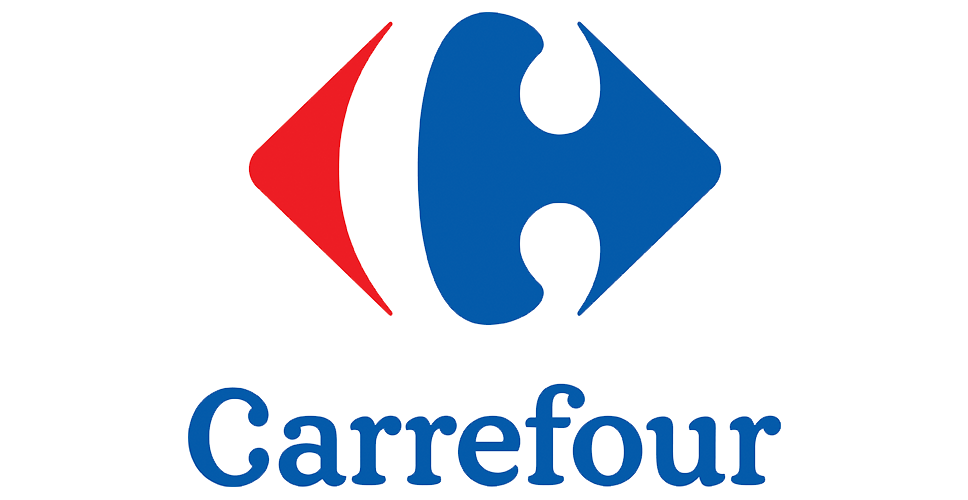Does your app or website delight your customers? If not, do you know why? While good visual design is important to draw visitors, inspire trust, and make a positive first impression, that isn’t what builds loyalty. It’s when customers need minimal effort to achieve their goals that they keep coming back, giving you the chance to build their perception of your brand.
UX is important
Consider your customers’ goals: They aren’t there to “appreciate the site’s color scheme” or even to “navigate the user interface.” Rather, visitors come with a task they need to or want to complete. So, any change to the UX design of your site or app must bring some quantifiable benefit that makes that task easier, whether that means finding information, opening an account, listening to music, or buying something they need.
As a result, a UX designer’s work is more than graphic design. It’s design thinking that also means interviews with stakeholders, doing user research, testing, and more, all with the goal of avoiding any issue that risks the failure of the project. That’s what makes for data-driven interaction design, and the data is not good without complete stakeholder input.
Why data-driven design is important
While there will always be a time and place for going with your gut, and another time and place for following best practices, UX is one area where you have the time and opportunity to gather the data you need to help your design team make better decisions during their design process.
Data-driven decision making is increasingly seen as an important tool. To look specifically at UX design, there’s the example of Humana. The firm was considering a redesign of the banner on its homepage. The company used A/B testing to evaluate color schemes, banner images, button forms, and microcopy. The results showed that a simpler design with a stronger CTA resulted in a 433% higher click-through rate (CTR) and an increased the number of applications received.
As you can see, user testing measured the effect of the various design options, making the best choices clear. Other tools are customer surveys, site analytics, and consumer research.
What is ROI for UX?
Acronyms can sound like fancy buzzwords; ROI is really a metric that attempts to quantify “business value.” It stands for “return on investment,” which sounds as if it’s all about money. Certainly, it often is, if you’re watching for changes in key performance indicators. However, you might be watching for changes in UX metrics—do your users feel better/more satisfied, does your CTR go up, and does your rate of cart abandonment go down? All of these examples of business impact are “results of investment,” which might be a better, more inclusive, more useful definition for ROI. So what results should we watch for—that is, what metrics should we pay attention to?
What is your goal?
Or: Frameworks and how they can help you
To determine what frameworks can help you, you need a concrete idea of what your site or app needs. What will be your goal in measuring your users’ experiences? So here are two useful frameworks to help UX designers identify their goals:
- the HEART framework
- the AARRR framework
The HEART framework
Developed at Google itself, the letters in HEART stand for five categories of user goals.
- Happiness: Retail brands and shops are probably the most affected by how happy their clients are, both by the site or app itself and with the product. A website for medical services, on the other hand, is less likely to be making someone happy, though there will be some sort of customer satisfaction.
- Engagement: Games might initially make a person happy, but what will really matter to you is if the user returns to the game time and time again. In certain circumstances, that medical website might also be engaging, if it’s providing useful information on a long-term issue.
- Adoption: Here again, a game app will want users to make a habit of playing. Also, a site that lets users create and host their work will want to become an important part of the users’ creative efforts, whether it’s just a tool, just a platform such as a blog, or both. To do so, it will need to be easy to use, but also easy to adapt, and if it is a platform, it will need to be able to promise and deliver visitors who are just there to enjoy the works the users post. When it comes to SaaS (software-as-a-service), adoption matters in terms of a feature that is either deemed useful or is seen as unnecessary bloat that most users don’t want—or don’t yet know that they want.
- Retention: This is a goal for a service that is determined entirely by the digital interface. Retention for a B2B software service will be a slow, possibly year-long wait for the purchasing company to decide how well the software is performing, while a purely online store will live and die according to how well it retains its customers from month to month or even day to day. How much of your business relies on your app or website?
- Task success: While online shopping might come to mind first—customers getting straight to filling their cart and buying items—task success is also a crucial goal for SaaS success. The same is true for any kind of reservation system to ensure that members and customers don’t feel the need to pick up the phone and call customer service.
The AARRR framework
The AARRR framework was introduced by David McClure, founder of Practical Venture Capital, and is also called the Pirate Framework. Each letter here refers to a phase of the customer life cycle.
- Acquisition: When new visitors come to your page or ask about your service, what kind of experience do you want them to have? An important part of effective acquisition is in fact finding the right customers—those from your target group who will need your product or service again and again.
- Activation: For an online shop, this means visitors make an order, becoming customers. We would hope that it’s a positive customer experience that entices them to make that order. It can be similar to a hotel or other accommodation. For a medical service, however, the users will already be clients—patients. In this case, activation means the patients use the online system rather than picking up the phone. In any case, we want to know if there’s an AHA! the moment when the visitor realizes the value of the service—the earlier the better.
- Retention: Once they’ve been activated, we want customers to return to you to fulfill new needs. If there was an AHA! moment, this might be more likely; then again, you might simply be offering the only service that’s good enough. As mentioned with HEART, this cycle will be much longer with business software. In this case, you hope that your clients’ employees do not reject your tool and continue with the system they had previously, or wish they could.
- Referral: Clients recommend your service to others. We may all dream of going viral, but even a few referred customers are better than none. So how many of your customers are actively recommending you, and why?
- Revenue: This goal means the most to online shopping and to freemium apps. How much are you earning from paying customers? If you update your UX and/or bring in a new feature, how does your revenue change?
As you can see, the two frameworks have slightly different focuses. However, there’s no reason you can’t mix and match the two when defining your goal.
Categories of metrics
You may be used to looking at overall page views and number of unique users, which are easy to track. Unfortunately, the quantitative data these metrics provide are often not very useful for evaluating how changes to your UX leads to changes in customer behavior and whether or not you’re meeting your goals. These two are too general to be the right metrics to relate directly to your users’ experiences. Here are some ideas for what you might want to measure:
Usability
How easily can users access the features and functions of your website or application? The user testing phase is a good opportunity to track subjects’ eyes as they navigate your product, as well as how they use the back button and the home button. Why did they use those buttons—because they navigated to a page or feature that wasn’t what they were looking for, or because they were just curious? Also ask about user flow: how easy they thought it was to find what they needed, and if they felt any frustration along the way. This is strongly related to what is possibly the very core of your UX improvement: task success.
Real user monitoring (RUM)
Watching how users interact with your site or product will help you understand how effective it is. This is called real user monitoring (RUM). Computers are good at gathering this data, and it works by adding code into an application or website to capture metrics while the application is in use. No survey needed.
For example, data collected on a user session can include navigation start, how fast fields are filled in, why form submissions fail, how many buttons are clicked, and how much time it took to complete actions. How often do visitors start using a form and then abandon it? How many of the other tasks that a user starts do they complete? How often do they make errors? As with usability testing, watch how the back and home buttons are used.
Behavioral proxies such as frequency, intensity, or depth of interaction also feed into this metric. How many visits does your site get per user per week? How many different kinds of products do the visitors look at?
This data can be used to begin to identify patterns and get a clear understanding of how to best modify the products and services that you offer. Importantly, you can analyze the data to find any pain points and then address those to improve user experience.
Retention
User retention metrics measure how many users are returning to your product or service after their initial engagement with it. If you have a high number of users coming back time after time, then that’s probably a good indication that you’re doing things right.
These metrics are relatively easy to measure since your customer database will tell you how many customers you have, how many have joined during a certain period of time, and how many have not been active. Customer Retention Rate is how many customers you have at the end of a time period, minus those who joined up in that time period, divided by the number of customers you had at the beginning of the time period.
Customer Churn, meanwhile, is calculated without subtracting the new users. You take the beginning number, subtract the end number, and divide by the beginning number. This is most obviously applicable to an online shop, but with SaaS, you’ll want to find a way to watch which features customers (or client employees) use.
The similar Revenue Churn is a measure of how many users drop or downgrade their subscriptions, even if they maintain their accounts. Meanwhile, if you introduce a new feature, how many of your inactive customers/users return or upgrade? If you’re looking for a directly monetary measure of business value, this fits the bill.
Finally, Net Promoter Score (NPS) relates to how many of your users rate your website or application at the highest end of the scale, on the assumption that this means they’re likely to recommend you to their friends and family. A purchase doesn’t necessarily mean a satisfied customer, so you need a survey (and possibly offer a gift) to ask your users if they are satisfied, if they think your site or product is easy to use, and if they would recommend your service.
Engagement
How engaged do visitors get with your products or services? Obviously, leaving a positive review—even if it isn’t glowing—is a good sign in this regard, because they are engaged enough to take the time to write about it. Other useful metrics are how many clicks and taps they make, how many screens and pages they view, whether they watch the videos you offer, and how much time they spend on your site.
Finally, you should examine how much time passes between their purchases, and your Loyal Customer Rate. This last may be expressed as the number of customers who purchased more than four times in a given time period divided by the number of unique customers your business had during the same time period. Both of these measures depend on how often customers need your product—cars and robots will not get repeat purchases as often as groceries, of course.
Adoption
How quickly are users adding your tool or shop to their general habits? For starters, you can measure how many users have installed and opened your app. Actual downloads are less indicative of true success; if only 1 of every 10 of those who installed your product actually open it and use it regularly, you might have a problem with its usability and/or perception of usefulness.
Depending on your service, the time period you use for counting a user’s sessions may vary. You should also look, if applicable, for repeat purchases.
Finally, watch for users sharing info about your product or service on social media.
Using AAARR and HEART frameworks to check UX ROI
Let’s take a look at a couple of examples of using these frameworks, defining your goals, and choosing useful metrics.
First, let’s say you run an appointment-booking service. Such a service has clients―the shops that give you a cut for appointments that their clients book―and a separate set of users, who are the ones who visit your site and/or download your app.
From the HEART framework, you might identify your goals as user happiness, user adoption, client adoption, and users’ task success (making appointments). The AARRR framework, meanwhile, seems more generally useful with regard to your clients, because you want to acquire and retain them, you want them to refer your service to other professionals, and it’s the clients who are the source of your revenue.
Of course, the revenue won’t be there if your service doesn’t also retain users. Therefore, let’s look at churn and adoption. Is there growth in user numbers, and do users log in and make appointments on a regular basis?
Let’s say that they do. But rather than resting on our laurels, let’s be sure that the users are successfully completing tasks. How often are appointment processes started but not finished? When a user doesn’t finish making an appointment, what does he or she do next, start over, leave the site, or make a different appointment? I think we can see that the answer to this question has different implications for our UX design.
Second, let’s say you run a platform―a website and app where users can post their creative work: long-form prose, comics, animations, graphic arts, musical performances, and dance performances. Here again, there are two sets of users: the creators and the viewers. This time, it’s the viewers who are the source of your revenue, some of which you pass on to the creators.
Starting again with the HEART framework, we might wonder about viewer happiness. In fact, it might not be exactly “happiness,” but rather some sort of emotional reaction that will bring them back for more. Thus you have viewer adoption, as well as creator adoption, of course. It’s also about the creator’s task success—in this case, you want them to successfully post and publicize their work, as well as to easily submit the details you’ll need in order to pay them their share.
For the AARRR framework, you have both viewers and creators for all of the first four letters, but each group will have different reasons.
So now that you’ve completed your marketing blitz, you need to watch what’s going on with your platform. You have the visitor numbers you were hoping for, but there is a huge amount of churn. Why? One clue would be a lower-than-hoped-for number of submitted works. The visitors are coming, but not seeing enough of what they want. So you’ll need to turn your attention to the metrics that help you see why you aren’t acquiring enough creators. Is it the actual visual design of the site? Since there’s no way to know which visitors are potential creator-submitters, you’ll need to ask those who have submitted a work if they like the design. Or perhaps the submission process is poor, which is something you’ll want your design team to know.
An earlier article of ours provides another perspective with a close look at insurance sales.
Final thoughts
The story of the Internet over the last 30 years has been one of increasing UX research and the increasing focus of design teams on solving problems of great design. Whether the ROI of your UX design means tangible business results such as increasing revenue, cost savings, or just better brand reputation, most businesses that have seen success have decided to spend money on the design system to ensure a positive impact with the hopes of increasing revenue and conversion rates.









